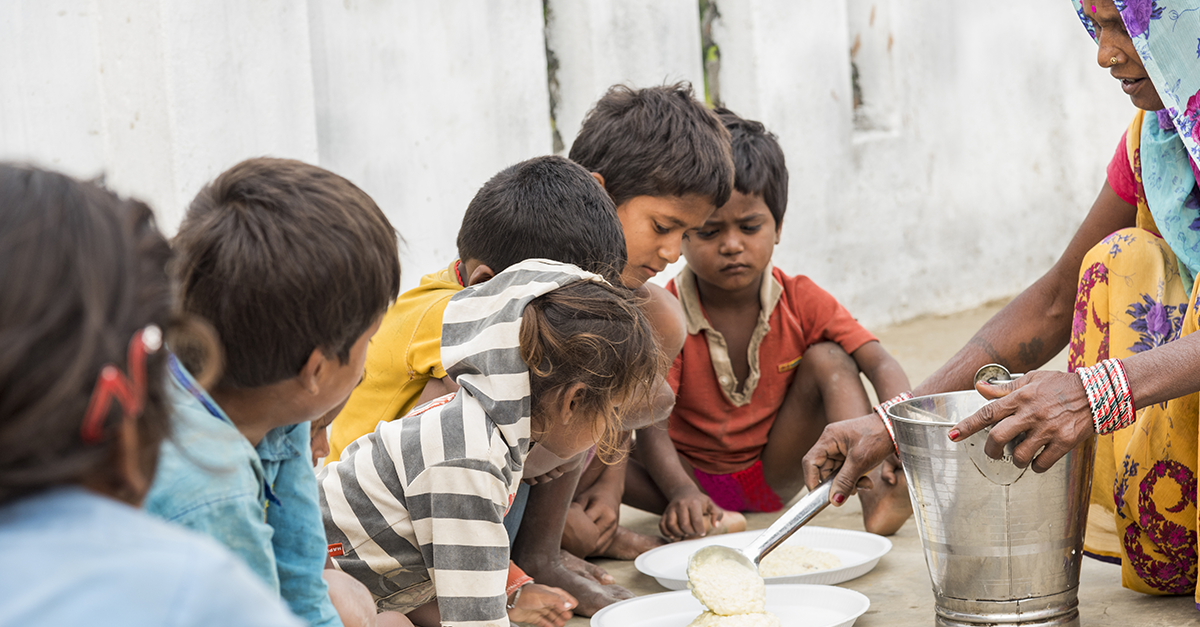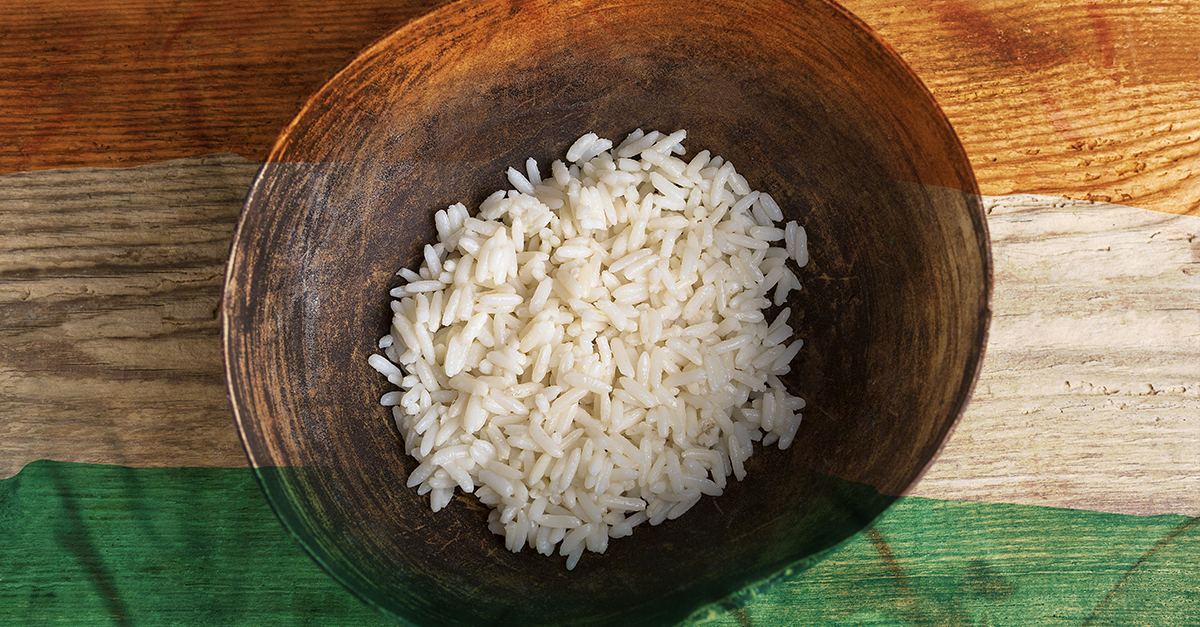DaanUtsav, a week-long philanthropic initiative timed to coincide with Gandhi Jayanti, recently concluded in India. The initiative brings together corporate social responsibility programs, NGOs, as well as volunteering and fundraising efforts among ordinary citizens. As a nation India is on a positive trajectory, re-emerging from the effects of colonialism followed by several decades of cronyism in politics. While this rejuvenation is not yet complete, leading economic bodies and analysts are unanimous in the opinion that – at the current rates of growth – the country should leave behind a legacy of widespread poverty by 2030. In itself, that is a sea-change from the position India was in only a couple of decades ago, however, there are numerous steps we can take to ensure that the bare necessities of life are never again denied even the least financially vulnerable citizens of India.

I think all of us would agree that hunger is the most basic need that a civilized society needs to address. In the case of India, this is a particularly strange legacy to have acquired in the 20th century. Historical accounts – both indigenous and those of outsiders –freely acknowledge that as recently as the early to mid nineteenth century, India had the highest per-capita agricultural production in the world, until artificial famines were created as a colonial mechanism. Curiously, after independence in 1947, rather than adopting – at least in part – practices that had yielded such abundance over several millennia, the country put its proverbial eggs in the basket of the nascent ‘green revolution’. To an extent, this is understandable. It is commonplace for colonized societies to undergo a crisis of confidence. However, agriculture – in particular – is a science and art in which long-standing practices tend to be the best fit for a particular geography and climate. In my opinion, taking the best from traditional practices and new innovations is the best and most viable course to take in a sector as fundamental an aspect of wellbeing and the economy, as agricultural production.
It is human nature to think that wholesale changes and the latest innovation hold the solution to a problem. However, much like our personal health as individuals, restoration of ecologies that were thriving in the past, can be a highly effective response. As I noted previously, I’m not surprised that the green revolution was such an important initiative in the newly independent India. Having been thrust into a cycle of artificially created scarcities and famines by erstwhile colonial administrations, addressing hunger was – rightly – high on the priority of the nation. The emerging technologies of mechanized, chemically enabled and large acreage farming seemed to be the quickest fix. The prevalence of petrochemical based solutions in every walk of life was, no doubt, also a foundational presumption in backing these efforts. Hindsight and history show us, however, that these solutions created considerable problems of their own.
A petrochemical based approach to farming creates huge dependencies and economic consequences. In addition, health issues that have become far more prevalent in the era of chemical fertilizer and pesticides also drag us into a cycle of diminishing returns and debased life standards. A patient suffering from a condition caused by the quality of their food is, eventually, in as vulnerable a state as a poverty
stricken individual with no food. In other words, replacing one problem with another surely cannot be the best we can do.
Fortunately, if we pay attention, there are tremendous strengths for India to draw from. The country still has the world’s largest amount of arable land – ahead of the United States and more than one and a half times that of China. This is largely the result of the ‘Panchgavvya’ cow based agricultural systems that our ancestors practiced. It is a little known fact that modern Iraq and much of the Arabian Desert were known as the ‘green crescent’ at a certain time in history. These were highly productive and arable lands, well irrigated by the Euphrates and the Tigris and their tributaries. What disrupted this production was the same mechanism that has reduced arable land in most of the world – mono-cropping. While growing large amounts of the same plant in a field seems to be the most efficient way to ensure the highest possible production, such a technique strips the land of the same nutrients year after year, eventually rendering it unusable and non-productive. What’s more, growing large quantities of a particular crop exclusively becomes an open invitation for pests that prefer that plant for their food. India’s cow based agricultural system recycled carbon and nutrients back to the soil using many different concoctions that paired manure and particular plant extracts in order to repair and replenish soils. These techniques spread to South East Asia, Japan and Korea as well – where they were eagerly adopted. Fortunately for us, these techniques are undergoing a strong revival in India. A widespread return of this style of native farming – under the various names of Zero Budget Natural Farming, Rishi Krishi, Bio-Dynamic Farming and Vedic Krishi – is slowly but steadily returning more and more land to an arable and productive condition. Apart from being indigenous, techniques these methods are much better aligned with the prevalence of small acreage farmers in India – high production per unit of land at lower costs is the only economically viable model for such farms.

Another great inherent strength of the Indian agricultural sector is the tremendous bio-diversity of indigenous seed varieties that has survived modern chemical farming and the green revolution. India is also fairly unique among modern economies that a good majority of its waste still remains compostable wet waste. The synergy that can result from closed loop disposable methods is self-apparent. I am hugely enthused that several government and private initiatives are targeting these low hanging fruit. The rising demand for organic produce – both within India as well as around the world – can drive much better margins at majorly reduced running costs, for farmers with small land holdings. A more viable economic model also, in turn, reduces the fiscal impact of subsidies, introducing more sustainable economic conditions for other sectors of the economy as well. Most important of all, the bottom line effect on hunger and malnutrition for the poorest sections of society can be addressed through such a diversified food production model.
In my opinion, the development of both traditional and modern models of agricultural industries is not only possible it is desirable. Multiplicity of approaches provides choices to the consumer, the farmer and even to the agri-resource market itself. It will reduce dependencies and vulnerabilities, diversify avenues for profits and create a thriving primary production economy that can address both economic and food security, in a sustainable manner. As a person of Indian origin, it is reassuring to me that some of the darkest days that we have endured look set to be overcome. Nevertheless, I think it would be in all our interest that we retain the best and most productive ideas from previous eras of plenty as well. An approach that includes all good ideas and effective solutions is always advisable, in my opinion. Let us empower both our consumers and producers with an array of possible choices that best suit their needs. As we re-emerge from an era of want, let us ensure that our food production mechanism regain the robustness and high productivity for which they set unparalleled standards at other times in our history.


